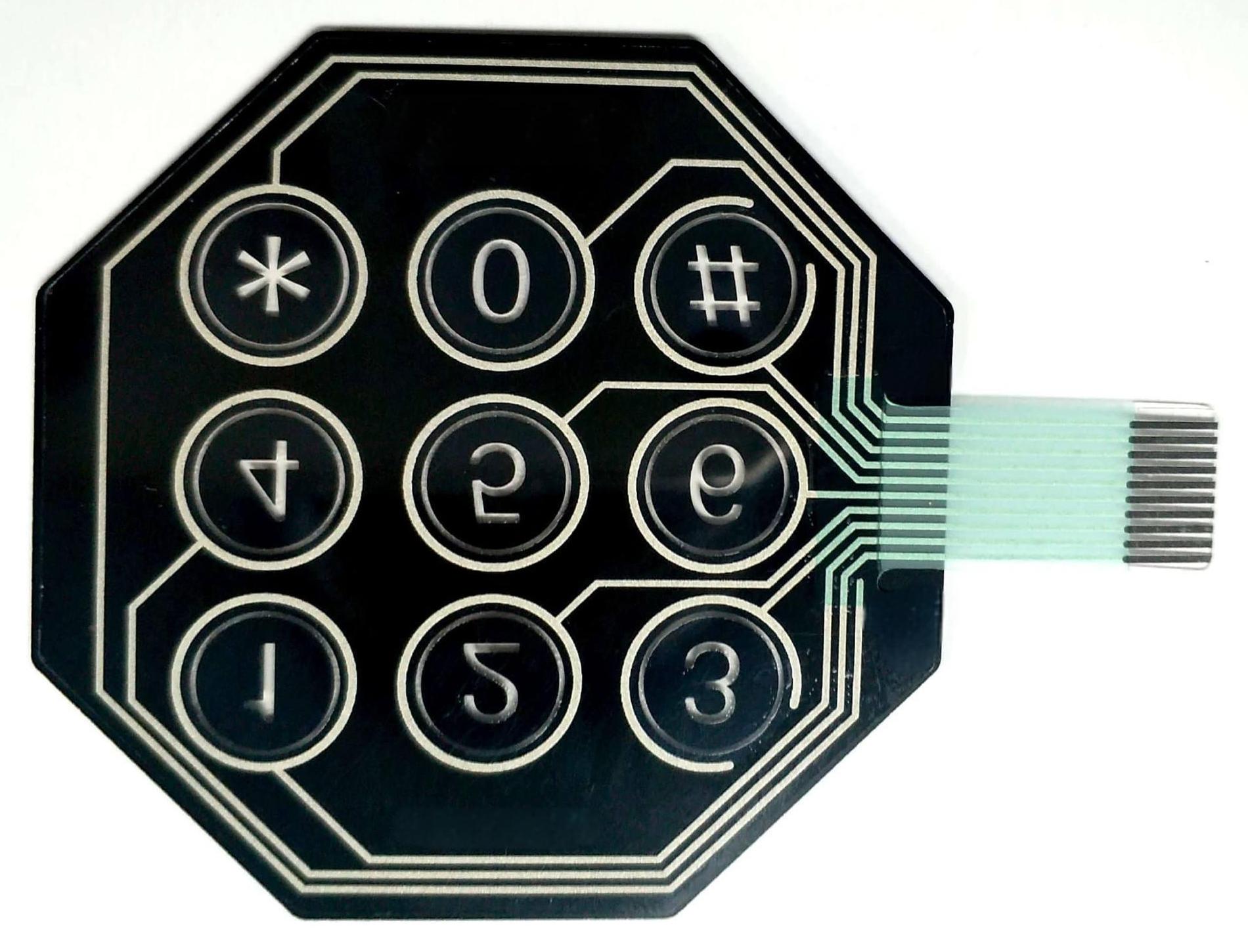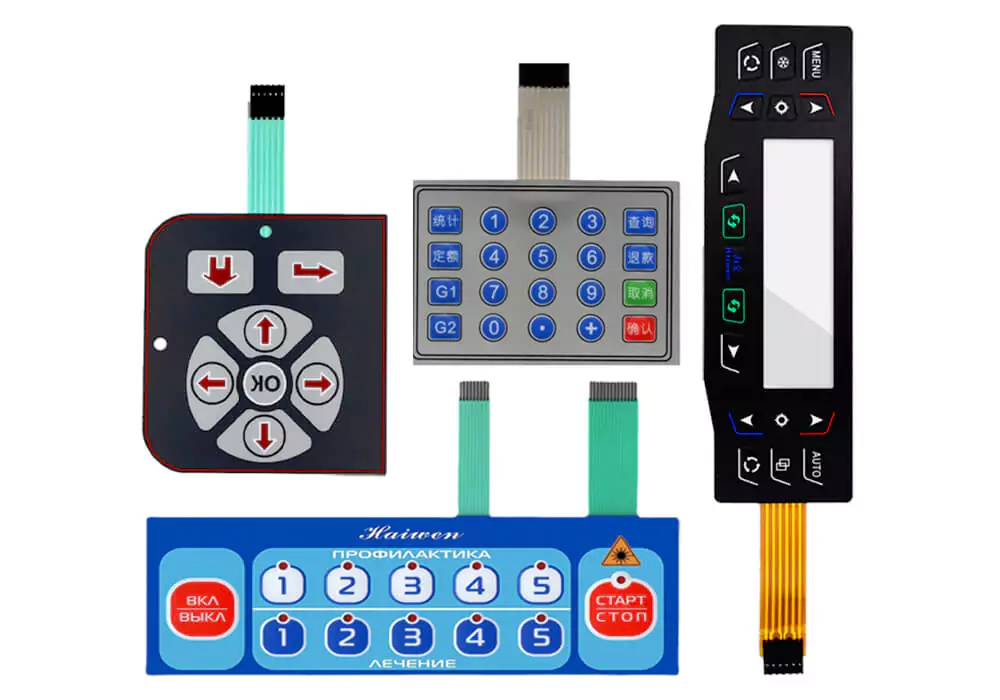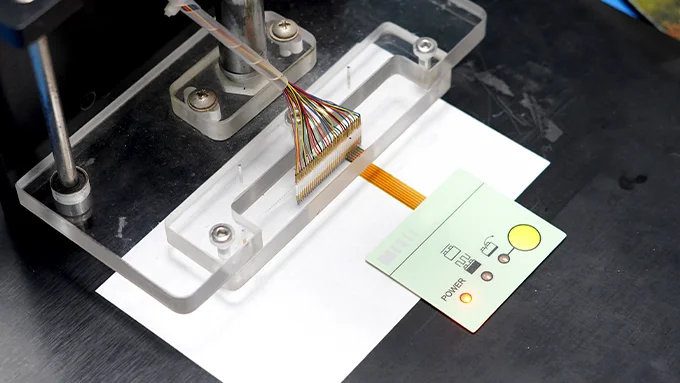The Manufacturing Refine Behind Membrane Layer Switch: What You Required to Know
The manufacturing procedure behind membrane changes combines mindful style, material choice, and quality control. It starts with comprehending the intricacies of membrane switch design and proceeds with numerous stages, consisting of material choices and printing techniques. Each stage plays an essential function in ensuring performance and durability. The complexities of layer building and construction and the extensive screening criteria may expose understandings that are not immediately noticeable. What lies beyond these fundamental components?
Understanding Membrane Switch Over Layout
Although membrane buttons may appear basic in the beginning glance, their style includes detailed factors to consider that ensure capability and resilience. The style procedure starts with a complete understanding of user requirements, consisting of the interface's intended application and environmental variables. Ergonomics is a key element, as the layout should help with ease of use while making certain that tactile feedback satisfies customer expectations.Moreover, the layering of parts, such as visuals overlays, glue layers, and conductive traces, need to be precisely crafted. membrane switch. This split arrangement not just influences the switch's responsiveness yet additionally affects its long life. Interest is provided to the sealing methods employed to shield versus wetness and dirt, which might jeopardize performance. In addition, layout considerations encompass aesthetic appeals, where color plans and visual clarity boost individual experience. Ultimately, the layout of membrane switches equilibriums capability, individual experience, and resilience, making certain that they fulfill the demands of various applications properly
Products Made Use Of in Membrane Layer Switch Manufacturing
When picking materials for membrane layer switch production, it is essential to ponder both performance and durability. The key materials consist of polyester and polycarbonate films, which supply adaptability and stamina. These films are commonly coated with sticky to guarantee appropriate bonding to substratums. Conductive inks, usually composed of silver or carbon, are crucial for producing electrical connections within the button, permitting reliable operation.Additionally, a protective layer, such as a hard layer, is frequently used to boost scratch resistance and durability. The selection of backing material, such as acrylic or foam, can significantly affect the button's tactile feel and general customer experience. Various environmental aspects, consisting of temperature and humidity, ought to assist material choice to ensure peak efficiency in details applications. Ultimately, the best combination of products adds to the membrane layer button's capability and life-span, making educated choices vital for makers.
The Printing Process: Creating Video and Text
The printing process in membrane button production plays a substantial duty in generating top notch graphics and message. Numerous visuals layout strategies are used to assure aesthetic charm and capability, while careful ink option methods are necessary for longevity and efficiency. Recognizing these elements is essential for accomplishing best lead to membrane button layout.
Graphic Design Techniques
Graphic design strategies play a crucial duty in the printing process of membrane layer buttons, as they define just how graphics and text will eventually appear on the last product. Effective visuals design entails the calculated use designs, fonts, and shades to improve readability and visual appeal. Designers typically utilize vector graphics for scalability, making certain that images continue to be sharp at various dimensions. Additionally, focus to contrast and placement is important, as it affects user communication and aesthetic high quality. The unification of branding aspects, such as logos, need to be handled with care to keep brand name integrity. Generally, thoughtful graphic design strategies contribute significantly to the capability and beauty of membrane buttons, influencing user experience and product efficiency.
Ink Choice Approaches
Selecting the proper ink is crucial for achieving the preferred aesthetic top quality and resilience in membrane button manufacturing. Various ink types are utilized, including solvent-based, water-based, and UV-curable inks. Each kind supplies unique features, such as adaptability, attachment, and resistance to ecological variables. Solvent-based inks are often favored for their resilience and dynamic colors, while water-based inks are much more environmentally pleasant yet may have limitations in adhesion. UV-curable inks provide rapid curing and robust performance. Additionally, shade matching strategies guarantee that the chosen inks line up with style requirements. Inevitably, the choice of ink must take into consideration variables such as application approach, substratum compatibility, and end-use demands to achieve remarkable lead to membrane switch graphics and message.
Layer Building And Construction and Assembly

Product Option Process
A mindful option of materials is important in the manufacturing procedure of membrane layer buttons, as it straight affects capability and durability. The key products used consist of click this polyester, polycarbonate, and numerous conductive inks. Polyester is typically favored for its exceptional resistance to chemicals and abrasion, making it appropriate for extreme environments. Polycarbonate, on the other hand, supplies superior quality and influence resistance, which is valuable for applications calling for presence and effectiveness. Conductive inks, commonly made up of silver or carbon, are essential for developing trusted electric paths. Furthermore, the option of adhesive materials influences the total integrity of the switch - membrane switch. Evaluating factors such as ecological direct exposure, tactile feedback, and visual demands guides manufacturers in picking the very best materials for their particular applications
Layer Adhesion Strategies
Sticking layers in membrane button building and construction is a crucial process that ensures performance and longevity. Numerous attachment techniques are used to protect perfect bonding in between layers, which commonly consist of using adhesives, heat, and pressure. Pressure-sensitive adhesives (PSAs) are typically made use of for their ease of application and instant bonding capacities. Additionally, thermal bonding methods can be used, where warm is used to trigger adhesive properties, securing a solid bond. The choice of attachment method greatly depends on the products involved and the certain application requirements of the membrane layer button. Appropriate alignment and uniform application of adhesives are vital to protect against defects, securing the switch runs successfully throughout its intended life-span.
Quality Control Measures
Assuring quality assurance during the layer building and construction and setting up of membrane switches is crucial for maintaining performance and integrity. This procedure generally includes numerous crucial procedures, consisting of thorough evaluations at each phase of manufacturing. Manufacturers make use of advanced testing methods, such as peel tests and bond analyses, to validate the honesty of layer bonds. Additionally, visual evaluations are carried out to identify any type of flaws in printing or product incongruities. Ecological problems, such as temperature level and moisture, are carefully monitored to guarantee optimal treating and adhesion. Normal calibration of equipment helps maintain specific production criteria. By applying these top quality control procedures, makers can substantially lower the danger of product failure, assuring that the last membrane layer changes meet the called for specs and consumer expectations.
Evaluating and Quality Assurance Measures

Advancements in Membrane Switch Modern Technology
As developments in technology remain to progress, membrane buttons are profiting from innovative growths that improve their functionality and customer experience. One notable innovation is the combination of capacitive touch technology, which permits more receptive and user-friendly user interfaces. This change not only enhances appearances however likewise decreases mechanical wear and tear, prolonging the life-span of the switches.Additionally, improvements in visuals overlay materials have actually resulted in boosted sturdiness and resistance to environmental variables such as wetness and UV light. These products now use boosted clarity and illumination, more raising the aesthetic appeal.Furthermore, the incorporation of wise modern technology is transforming this contact form membrane switches over into interactive control panels, allowing connection with IoT devices. This connectivity cultivates a smooth user experience, paving the means for applications in numerous industries, from health care to customer electronic devices. Collectively, these developments placement membrane layer switches as vital elements in modern-day tool design.
Frequently Asked Questions
The length of time Does the Membrane Change Production Refine Take?
The period of the membrane layer button production procedure can differ substantially. Variables such as intricacy, materials utilized, and manufacturing volume influence timelines, with regular manufacturing varying from a couple of days to several weeks for completion.
What Are the Common Applications for Membrane Switches?
Membrane switches are commonly utilized in various industries, consisting of auto controls, house devices, clinical tools, and customer electronic devices (membrane switch). Their adaptability and longevity make them ideal for applications calling for straightforward user interfaces and trusted efficiency in varied atmospheres
Can Membrane Switches Be Custom-made for Details Demands?

What Is the Life expectancy of a Regular Membrane Layer Switch?
The life expectancy of a normal membrane layer button differs, yet generally, it ranges from 1 to 5 million cycles. Variables such as use, environment, and material high quality substantially affect resilience and general performance in time.

Are Membrane Layer Switches Over Eco-friendly?
The ecological friendliness of membrane switches differs. Some products utilized may not be recyclable, while others can be environmentally friendly. The general impact depends on making techniques and materials, demanding cautious consideration during selection and disposal. The production process behind membrane switches over combines mindful design, material choice, and top quality control. It starts with comprehending the details of membrane layer switch style and proceeds via numerous stages, including product selections and printing techniques. When choosing products for membrane layer button manufacturing, it is necessary to contemplate both performance and sturdiness. A mindful choice of materials is essential in the manufacturing process of membrane layer switches, as it directly influences functionality and durability. The choice of attachment approach mainly depends on the products entailed and the particular application demands of the membrane layer button.